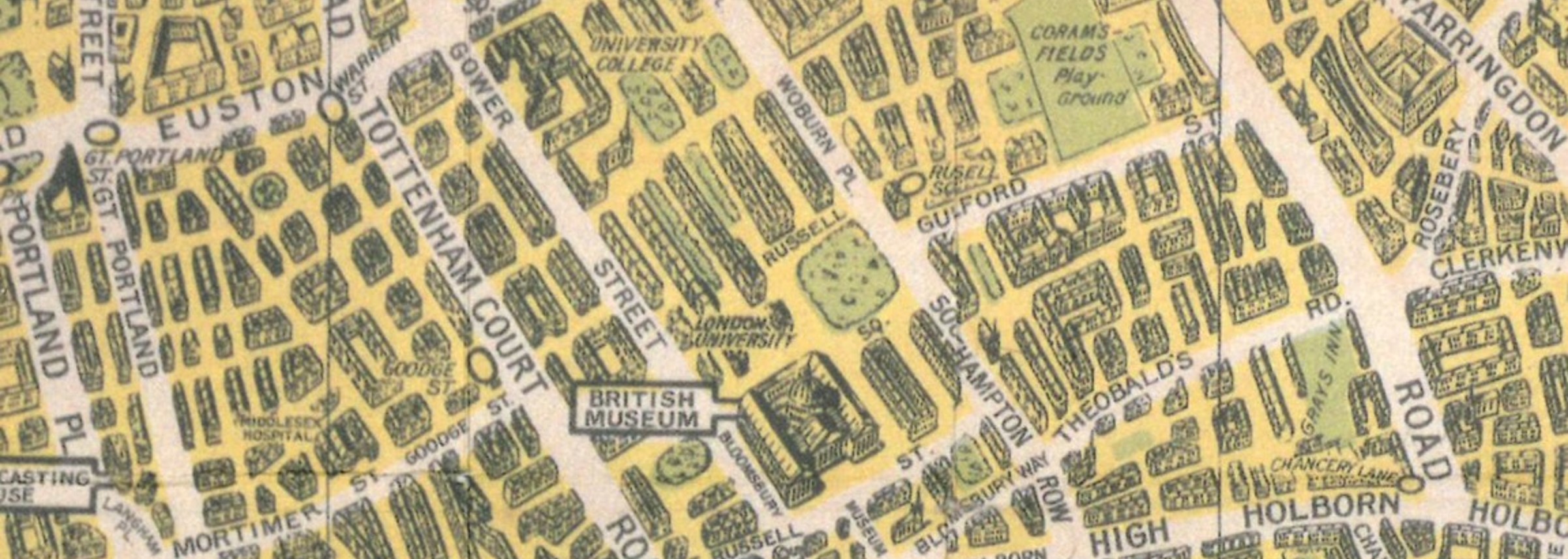
By walking in the footsteps of exile peoples, pausing in the spaces they frequented, we can read between the lines of the Bloomsbury streetmap and encounter the stories of refugees more immediately. As we stroll in the streets and squares we can believe that we are inhabiting their spatial world – separated from them only by time.
This online exhibition has been curated as a virtual history walk around the University of London's Bloomsbury campus, based on a series of guided walks carried out by staff of Senate House Library. The exhibition can also be used as the basis for a self-guided walk.
Follow us as we guide you around the Bloomsbury you may think you know – that of Virginia Woolf and her set – and we will reveal layers of other histories, which exist like geological strata under your feet. As you move around this busy, twenty-first century global city, we invite you to pause, to pay attention to the signs of past lives – the blue plaques that commemorate only some – and engage with the stories of refugee groups in danger of being forgotten, such as the Basque children, or the Hungarian students, who came to Bloomsbury through the first half of the twentieth century. Whether they settled here, moved on, made their mark, or just contributed to the life of this part of the city in an ordinary way, aspects of their lives and experiences have been preserved so they may be remembered.
The stories of the refugees told in this exhibition also raise questions about how societies react to refugees - which are as pertinent today as they were a hundred years ago. This exhibition considers how and why some refugee groups have been more welcome than others; how refugee groups have been valued or denigrated; and how communities can help.
In addition to telling the stories of some of the refugees who came to Bloomsbury, this exhibition signposts the numerous archives in Bloomsbury, including many associated with the University of London, which act to ensure the stories of refugee groups are conserved as part of our collective heritage.
Start your walk through our exhibition here: Setting the scene: Bloomsbury, 1935
Acknowledgements
This project was developed by Kat Hubschmann of the Research Centre for German & Austrian Exile Studies (Institute of Languages, Cultures and Societies) and Angharad Eyre, researcher at Senate House Library, with the kind assistance of the Wiener Holocaust Library and Quakers in Britain. The history walks on which this exhibition is based were developed by Kat, Angharad and Claire George (Senate House), and featured in the Being Human Festivals in 2025 and 2020. Being Human is the UK's national festival of the humanities, led by the School of Advanced Study, University of London, with generous support from Research England, in partnership with the Arts and Humanities Research Council and the British Academy. For further information please see beinghumanfestival.org.





